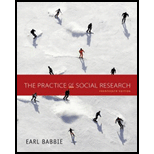
Introduction:
A recent study of short term memory capacity sought to determine if shorter stimuli are more easily recalled. In the experiment, researchers hypothesized that short words or short numbers would be more easy to recall than longer ones. The stimuli in this experiment are the words and numbers, while the dependent variable is how many long numbers and long words would be remembered compared to short words and short numbers.
Explanation of Solution
Answer and explanation:
(This question requires a subjective answer, this is an example.) http://psychlab1.hanover.edu/Classes/Cognition/Presentations/2007/Final%20Papers/ernstberger.pdf
This study, done at Hanover College, hypothesized that people would be able to recall more short numbers than long numbers, more short words than long words, and more long words than long numbers. The average number of information chunks a person can store in the short-term memory is seven, and this study used that average as a baseline to determine if the type of stimulus would influence that capacity. In this experiment, the stimulus is the length of the number or word given to the subject. The dependent variable, the one expected to change as a result of the changing stimulus, is the short-term memory capacity of the subject. This capacity would be measured by how many numbers or words recalled, and the comparative length of the same.
Want to see more full solutions like this?
Chapter 8 Solutions
The Practice of Social Research (MindTap Course List)
- video "SDG's aren't the same old, same old." What are SDG's? Sustainable Development Goals or "Global Goals" created by the United Nations (UN) https://www.youtube.com/watch?v=v7WUpgPZzpI&t=4sarrow_forwardvideo "SDG's aren't the same old, same old." What are SDG's? Sustainable Development Goals or "Global Goals" created by the United Nations (UN) https://www.youtube.com/watch?v=v7WUpgPZzpI&t=4s Describe at least 3 of the Global Goals mentioned in the video.arrow_forwardWatch the following video about early intervention for children with visual impairments: (its 10 minutes long) http://www.youtube.com/watch?v=6rbHOAtBNew After watching the video, consider the following: How were parents and family members involved in the early interventions offered to their child? Why was this involvement important? What sort of interventions were used? How were these beneficial?arrow_forward
- Simple/ humanized answers: How has the field of education for students with visual impairments (low vision and blindness) evolved? What is the definition of “visual impairment,” how are students identified, and what are the typical causes of visual impairments? Why is early intervention so critical for children with visual impairments, and how can families support children with visual impairments? What are some specific concerns for culturally and/or linguistically diverse children with visual impairments? What kinds of educational responses are needed to address the needs of students with visual impairments?arrow_forwardWould elections have more third-party success if the US had ranked-choice voting nationwide?arrow_forwardAnswer grammararrow_forward
- Would elections have more third-party success if we had ranked-choice voting nationwide?arrow_forwardHow do minor parties influence the U.S. electoral system?arrow_forwardeelancer X English task 1.pdf - Google Driv X kq_A8Yyhcg5Muq83vtY5jmlvjd6ITE/view + Open with Google Docs Task Requirements: Word Count: 300-400 Formatting Style: MLA (for more information click here) *** A minimum of 1 reliable source must be used! Any sources must be properly cited according to the formatting style assigned Many people disagree about the appropriate age to allow children and young adults to use social media. Write an essay that argues your viewpoint about the issue. Develop your claim with reasons and evidence, and form a rebuttal to argue against a counterclaim. Page 1 / 1 Q + 26°C Mcarrow_forward
- DCS cans certification exam answers micaharrow_forwardDescribe a business that has used backcasting or scenarios to assess a situation and then developed a strategy to achieve their goals? what are the obstacles they faced ?arrow_forwardWhy could Backcasting be considered the most useful futuring method? how does the use of modules and simulations relate to futuring? is this method effective?arrow_forward
 Social Psychology (10th Edition)SociologyISBN:9780134641287Author:Elliot Aronson, Timothy D. Wilson, Robin M. Akert, Samuel R. SommersPublisher:Pearson College Div
Social Psychology (10th Edition)SociologyISBN:9780134641287Author:Elliot Aronson, Timothy D. Wilson, Robin M. Akert, Samuel R. SommersPublisher:Pearson College Div Introduction to Sociology (Eleventh Edition)SociologyISBN:9780393639407Author:Deborah Carr, Anthony Giddens, Mitchell Duneier, Richard P. AppelbaumPublisher:W. W. Norton & Company
Introduction to Sociology (Eleventh Edition)SociologyISBN:9780393639407Author:Deborah Carr, Anthony Giddens, Mitchell Duneier, Richard P. AppelbaumPublisher:W. W. Norton & Company The Basics of Social Research (MindTap Course Lis...SociologyISBN:9781305503076Author:Earl R. BabbiePublisher:Cengage Learning
The Basics of Social Research (MindTap Course Lis...SociologyISBN:9781305503076Author:Earl R. BabbiePublisher:Cengage Learning Criminalistics: An Introduction to Forensic Scien...SociologyISBN:9780134477596Author:Saferstein, RichardPublisher:PEARSON
Criminalistics: An Introduction to Forensic Scien...SociologyISBN:9780134477596Author:Saferstein, RichardPublisher:PEARSON Sociology: A Down-to-Earth Approach (13th Edition)SociologyISBN:9780134205571Author:James M. HenslinPublisher:PEARSON
Sociology: A Down-to-Earth Approach (13th Edition)SociologyISBN:9780134205571Author:James M. HenslinPublisher:PEARSON Society: The Basics (14th Edition)SociologyISBN:9780134206325Author:John J. MacionisPublisher:PEARSON
Society: The Basics (14th Edition)SociologyISBN:9780134206325Author:John J. MacionisPublisher:PEARSON





